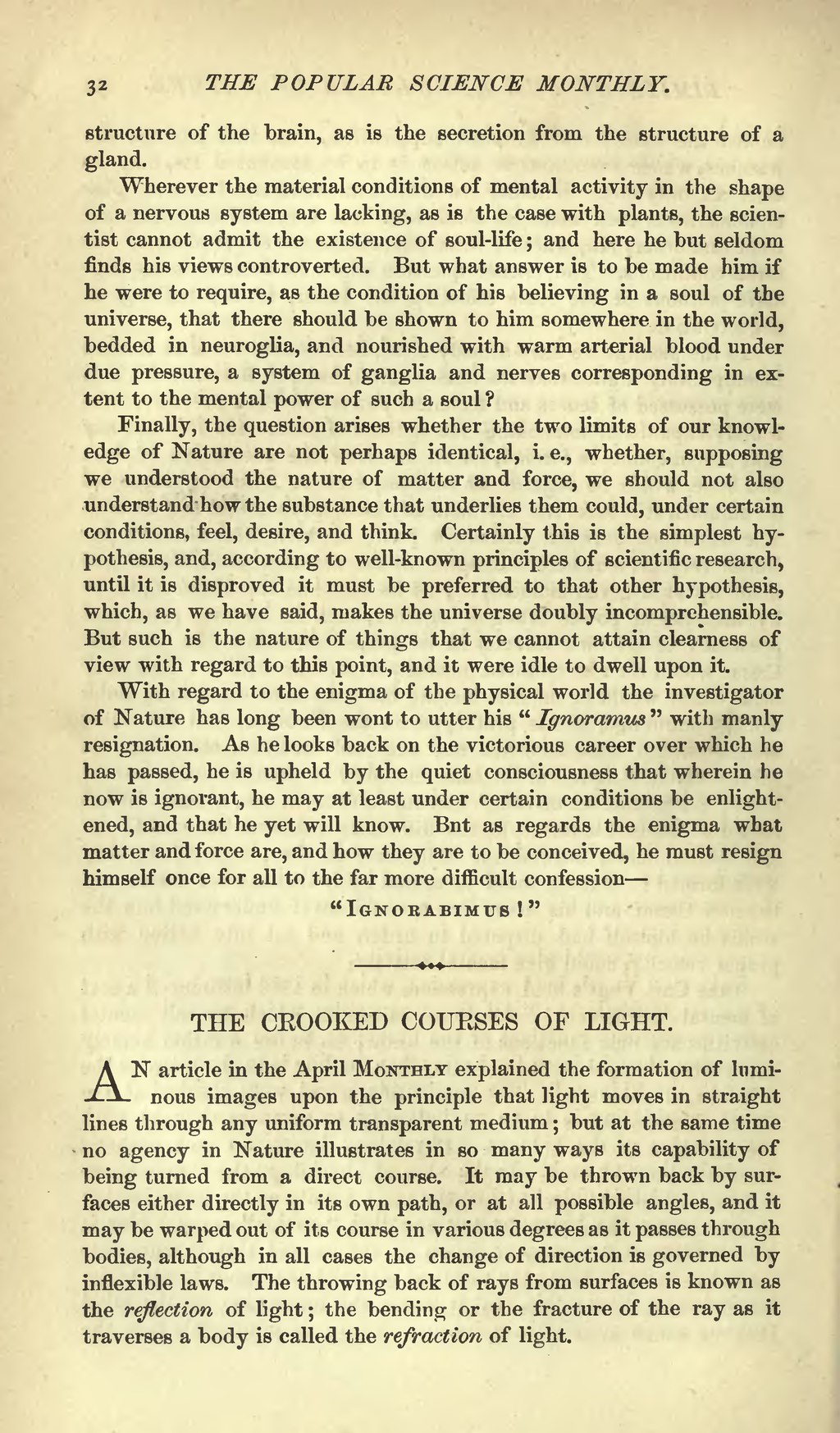structure of the brain, as is the secretion from the structure of a gland.
Wherever the material conditions of mental activity in the shape of a nervous system are lacking, as is the case with plants, the scientist cannot admit the existence of soul-life; and here he but seldom finds his views controverted. But what answer is to be made him if he were to require, as the condition of his believing in a soul of the universe, that there should be shown to him somewhere in the world, bedded in neuroglia, and nourished with warm arterial blood under due pressure, a system of ganglia and nerves corresponding in extent to the mental power of such a soul?
Finally, the question arises whether the two limits of our knowledge of Nature are not perhaps identical, i. e., whether, supposing we understood the nature of matter and force, we should not also understand how the substance that underlies them could, under certain conditions, feel, desire, and think. Certainly this is the simplest hypothesis, and, according to well-known principles of scientific research, until it is disproved it must be preferred to that other hypothesis, which, as we have said, makes the universe doubly incomprehensible. But such is the nature of things that we cannot attain clearness of view with regard to this point, and it were idle to dwell upon it.
With regard to the enigma of the physical world the investigator of Nature has long been wont to utter his "Ignoramus" with manly resignation. As he looks back on the victorious career over which he has passed, he is upheld by the quiet consciousness that wherein he now is ignorant, he may at least under certain conditions be enlightened, and that he yet will know. But as regards the enigma what matter and force are, and how they are to be conceived, he must resign himself once for all to the far more difficult confession—
"Ignorabimus!"
| THE CROOKED COURSES OF LIGHT. |
AN article in the April Monthly explained the formation of luminous images upon the principle that light moves in straight lines through any uniform transparent medium; but at the same time no agency in Nature illustrates in so many ways its capability of being turned from a direct course. It may be thrown back by surfaces either directly in its own path, or at all possible angles, and it may be warped out of its course in various degrees as it passes through bodies, although in all cases the change of direction is governed by inflexible laws. The throwing back of rays from surfaces is known as the reflection of light; the bending or the fracture of the ray as it traverses a body is called the refraction of light.
